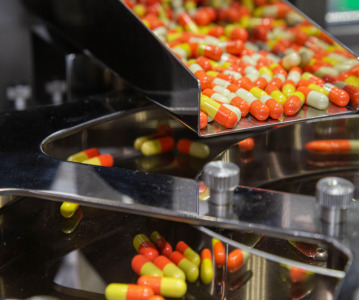The cost of bringing US pharma manufacturing home

What are the major implications of any drive to reshore US pharmaceutical manufacturing, given that current Asian domination is based on cost savings and capacity? We ask the experts...
As of August 2019, the FDA reported that only 28% of the manufacturing facilities making active pharmaceutical ingredients (APIs) for the US market were actually based in the US, and just 2% were located in Canada. The remaining 70% were abroad, with 18% in India and 13% in China.
This move towards Asian manufacturers occurred primarily due to cost savings and capacity. Not only were labor costs lower, but other costs were significantly reduced as well – including construction, utilities, and the shipping and transport of raw materials. Buying, handling, and disposing of toxic chemicals are also substantially cheaper in certain Asian countries where environmental regulations are not as stringent as those in western nations. A 2011 FDA report, for example, stated that manufacturing in India could save a company anywhere from 30-40%. These offshore drug manufacturing savings gave US drug companies a competitive advantage.
The COVID-19 pandemic has demonstrated there are risks with such a dependence on offshore manufacturing, including national security concerns. Another significant risk is safety. Over the last few years, the FDA has issued safety alerts on APIs manufactured in China due to inconsistencies and contamination. These safety issues have contributed to shortages of certain medicines. The pandemic brought to light an additional related risk – disruptions in the supply chain. Lockdowns across Asia and Europe led to logistical challenges that exacerbated drug shortages and highlighted concerns with US dependence on offshore manufacturing.
Reshoring manufacturing has been touted as a way to alleviate these concerns while benefiting US patients. Jim Miller, a noted independent consultant on Bio/Pharmaceutical manufacturing and strategy, explains that with reshoring, there will be less potential for disruptions in the supply chain, meaning patients would receive their treatments without concern of a delay.
There are other advantages, according to Miller: “With shorter supply chains, manufacturers will be able to respond more quickly to spikes in demand for a given product, which could reduce the frequency of drug shortages.” He also notes that if manufacturing facilities are in the US, FDA inspections are likely to be more frequent and effective.
Even with these advantages, there are still challenges with reshoring API and drug manufacturing. The biggest concern is how the US can offset the savings of offshore manufacturing, especially regarding labor. The other consideration is the capital needed to resolve capacity constraints.
Paul Hirsh, Senior Vice President, Industry Development and Strategic Partnerships at The Society of Chemical Manufacturers & Affiliates (SOCMA), relates “industry guidance suggests that the cost of the API in a final Drug Product is on the order of single-digit percentages. While a US-based supply would initially cost more, the resulting outcome on the drug product should be rather small.”
Miller agrees, stating “greater labor productivity, reduced logistics expenses, and lower inventory costs” could offset the costs. Miller also states, however, that “it will not be possible to repatriate all of the supply chain, nor is it likely to be desirable. Many of the raw materials are only available in specific countries, and much of the supply base, whether for APIs or glass vials, is located offshore and will require enormous investment and much time to replicate.”
Infrastructure the biggest challenge to reshoring
Miller says the principal challenge to reshoring is infrastructure. “The biggest single challenge for repatriation of pharmaceutical production will be to build the necessary physical manufacturing capacity. This is especially true for small molecule APIs, for which domestic US capacity is very limited. Most generic APIs and much of the innovator APIs come from Europe, India and, increasingly, China. There simply is not the infrastructure in the US to manufacture those quantities of GMP-grade fine chemicals. Those will require billions of dollars of capital investment over a 5-10 year period.”
Hirsh sees domestic investment as necessary. “The cost of ex-US production is steadily increasing as quality, regulatory, and economic standards are rising to meet expectations of US customers. Coupled with the costs associated with shipping, import duties, and carrying costs for longer lead times, the price gap is beginning to narrow.” He believes companies need to “consider the total cost of the product…and the proximity of the technical teams and their ability to effectively collaborate to support improvement in the manufacturing process to drive cost reduction.”
Industry leaders and the FDA believe that advanced manufacturing is crucial in enabling the US to compete with lower-cost foreign manufacturers. Miller points out that the life sciences industry was slow to adopt advanced manufacturing processes like continuous manufacturing, which eliminates the stops in traditional batch manufacturing. However, over the last several years, the industry has made a concerted effort to embrace new technology. That push could ultimately help support reshoring efforts, as advanced manufacturing methods increase efficiencies and reduce labor costs.
Talent pool
Advanced manufacturing sounds like the key to bringing manufacturing home, but one major limitation could stand in the way—talent. But Miller states that the skills gap is likely to be most apparent with small molecule pharmaceuticals. “The big skills challenges today in the bio/pharma industry are for the advanced technologies like gene and cell therapy and large molecule biologics. Those manufacturing activities are already largely domestic, or have operations in countries with well-established trading relationships like the UK and Europe. Repatriation of traditional pharmaceutical manufacturing will tap into a different skills pool, such as chemists and equipment operators.”
Hirsh refers to the talent gap as “a chicken and the egg discussion.” He questions, “if there is no manufacturing in the US, what would trigger the demand for talent? We need to drive the demand to kickstart a push for a supply of talent.”
If these jobs are created, there will still be the concern of filling them with qualified candidates. As Miller notes, the digitization of manufacturing is happening across all sectors of manufacturing, making “competition for that talent more costly.” Other sectors, like high-tech and consumer products, are recognizing the opportunity in reskilling their staff by investing in training programs.
While the life sciences industry may be slow to adopt new manufacturing methods, educational programs have already begun integrating these changes into their curriculum. Miller points out that “for many positions like equipment operators and lab techs, companies already run in-house training programs. In many states, there are cooperative programs between employers and local community colleges to train workers.”
Reshoring drug and API manufacturing may come with upfront costs and continual investment, but the long-term benefits will seemingly offset offshoring advantages for US companies. The cost savings and job creation benefits are significant, but the ability to bring drugs to patients faster and more reliably is unparalleled.
Want to learn more about this and other topics related to pharma in North America? Join us at CPHI North America this summer - online July 19 - August 13, and in-person August 10-12 in Philadelphia, PA. Registration is now live and tickets are free until July 18th!

Related News
-
News Pharmapack Awards 2024 Patient-Centric Design Award Winner – Dr Ferrer BioPharma
The 2024 Pharmapack Awards celebrated the best in innovation and design for the pharmaceutical packaging and drug delivery industry on January 24, 2024. -
News Women in Pharma: Minding the Gap at Pharmapack 2024
2024 marks the first year Pharmapack will host a Diversity track dedicated to bridging the gap within the pharmaceutical packaging and drug delivery sector. The track includes a panel discussion on 'Enabling Diversity in the Workplace,' focused... -
News Pharmapack Awards 2024 - Celebrating Packaging and Drug Delivery Innovation
The 2024 Pharmapack Innovation Awards ceremony celebrated the best in pharmaceutical packaging and drug delivery innovation at all levels. The awards were held on January 24, 2024 at the Paris Expo Porte de Versailles. -
News 2024 Pharma Industry Trends Outlook: Collaboration, Market Maturity, and Digital Futures
The annual CPHI Online 2024 Pharma Trends Outlook, in partnership with Arvato Systems, identifies 12 key industry trends shaping the life sciences industry in the coming year. -
News New Novo Nordisk AI hub for drug discovery to open in London, UK
Danish pharmaceutical giant Novo Nordisk will be opening an AI-based research facility in the heart of London to advance drug discovery operations. -
News BioNTech to begin mRNA vaccine manufacturing in Rwanda by 2025
German biotechnology company BioNTech has stated their intentions to begin production at their mRNA vaccine factory in Rwanda by 2025, which will mark the first foreign mRNA vaccine manufacturing site on the continent of Africa. -
News Women in Pharma: Looking back on 2023 and moving forward to 2024
In this monthly series, we interview women from across the pharmaceutical industry and supply chain to discuss the importance of gender diversity in healthcare, the workplace, and beyond. -
News CPHI Barcelona 2023: Partnering for Success – Managing Outsourcing Relationships to Optimise Manufacturing Operations
During CPHI Barcelona 2023, insightful content sessions offered attendees the chance to explore trending topics with expert speakers and panellists. Here, we summarise what the pharma industry and supply chain are talking about the most.
Position your company at the heart of the global Pharma industry with a CPHI Online membership
-
Your products and solutions visible to thousands of visitors within the largest Pharma marketplace
-
Generate high-quality, engaged leads for your business, all year round
-
Promote your business as the industry’s thought-leader by hosting your reports, brochures and videos within your profile
-
Your company’s profile boosted at all participating CPHI events
-
An easy-to-use platform with a detailed dashboard showing your leads and performance







